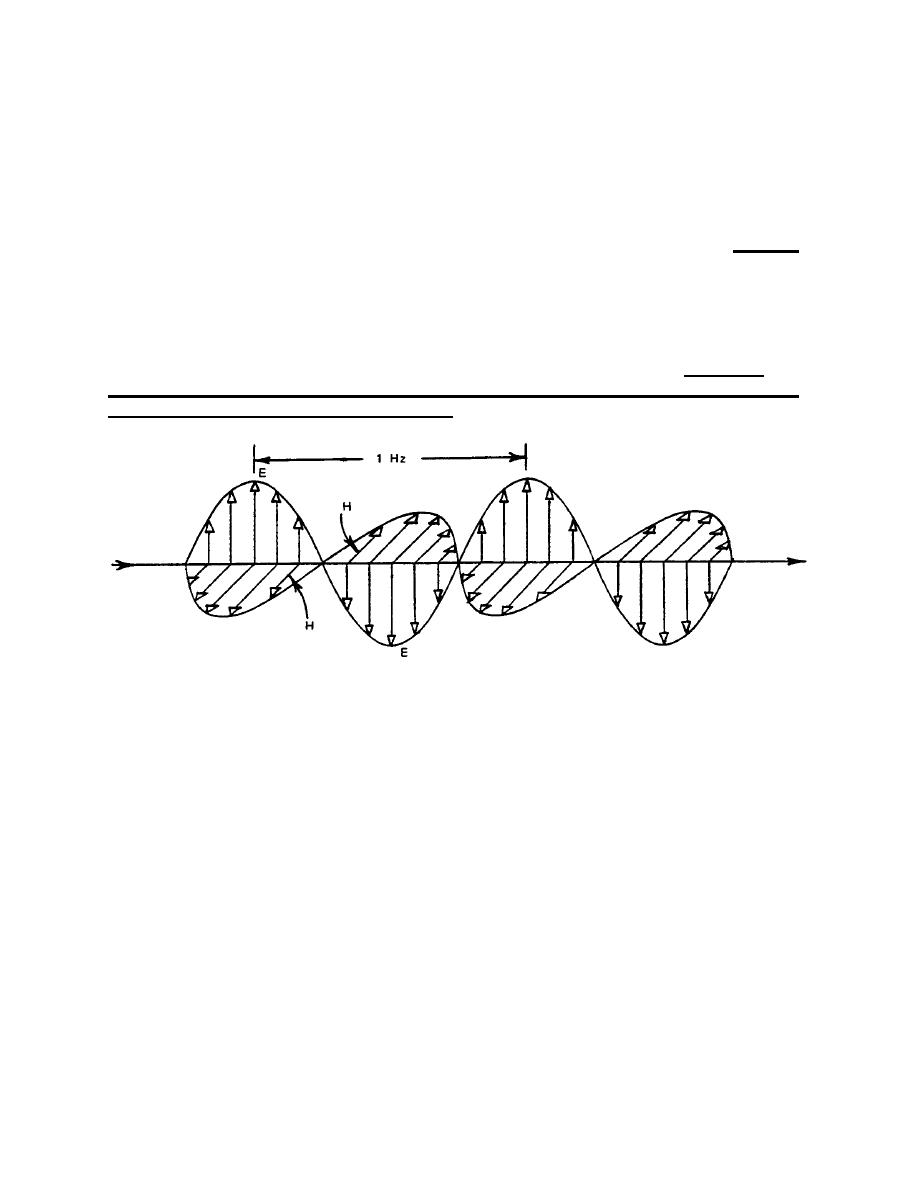
3-3. MICROWAVE GENERATION
a. There are many pieces of equipment available today that are capable of
producing microwave radiation. To produce microwave radiation, specially designed
electron tubes must be employed. Magnetron tubes and travelling waves may be used
to produce lower frequency microwaves, such as those used for heat production.
Microwave radiation higher frequencies, such as radar, may be produced by a Klystron
tube.
b. In all cases, the radiation field of a microwave generator is made up of an
electric field (E field) and a magnetic field (H field), which vary together in intensity but
whose directions are at right angles to one another in space, and both of which are at
right angles to the antennae from which they were emitted (Figure 3-1). Each field
supports the other and neither can exist by itself without setting up the other. Together
they are termed the "electromagnetic field."
Figure 3-1. Relationship of E and H fields.
3-4. USES
The major stumbling blocks to the large scale industrial, military, and home use
of microwave radiation have been high cost, size of equipment, and maintenance.
These three problems are of particular interest in any attempt to provide microwave
systems for home use. The recent advent of solid-state microwave equipment, with its
reduction in size, and the latest technological advances which have simplified the
operation and maintenance of microwave systems, have made possible many uses for
microwaves which were not feasible just a few years ago. The primary uses of
microwave radiation can be subdivided into two distinct categories. The first category
utilizes the heating effect of microwave radiation and involves only microwave
generators. The second category utilizes microwave radiation as a means of conveying
information, such as radar and communications systems, and therefore requires a
generator (known as a "transmitter") and some type of receiver.
MD0180
3-3




 Previous Page
Previous Page
